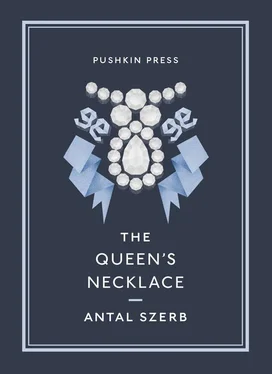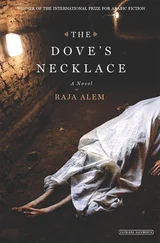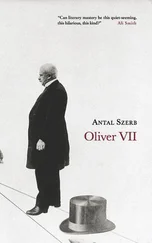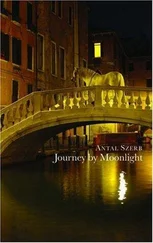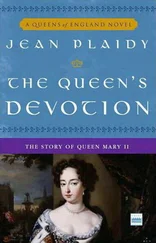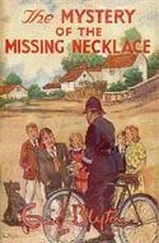But this is all rather general. The precise nature of Rohan’s status and condition as a grand seigneur can be better demonstrated by some biographical and statistical facts.
There was a general feeling in Marie-Antoinette’s France that he would not long remain a mere coadjutor. His two extremely influential aunts, Mme de Guéménée and Mme de Marsan, Royal Governess to the young princes (the term ‘governess’ not to be understood in the modern sense), supported by Mme du Barry and the government minister the Duc d’Aiguillon (who owed his position to her favour), persuaded the ageing Louis XV to send him as ambassador to Vienna. Since France and Austria were at the time allies, loyal if mutually suspicious, the roles of French envoy to Vienna and of his Austrian counterpart to Versailles were the most important diplomatic postings in Europe. The Austrian representative, Comte Mercy-Argenteau, was among the most eminent people in Paris. His influence was that of a minister. He was counsellor to the young Marie-Antoinette and his mistress was the most celebrated beauty of the opera. And what he was in Paris, Rohan aspired to become in Vienna, a city second only to the French capital in its savoir-vivre , its sense of life as a work of art.
Now for some more personal information. Rohan took with him to Vienna (omitting, for the sake of brevity, a truly astonishing quantity of material goods): fifty stallions, and accompanying personnel; six cadets from the most aristocratic families of Alsace and Brittany; their instructor in the handling of weapons, and their Latin tutor; two noblemen in his own service, ‘ pour les honneurs de la chambre ’, one of them a knight of Malta, the other a captain of horse; six valets, a maître d’hôtel, a head of household, two liveried attendants, four couriers (their costumes costing 4,000 livres each), to ‘glitter in the sunlight, as in a fairy tale’; twelve footmen; two ‘Swiss guards’, the leaner of them to command the inner door, the other, who was extremely plump, to man the gate; six musicians, to play during meals; a steward, a treasurer, four embassy officials of high social rank; the Jesuit Abbé Georgel as secretary to the legation, and four under-secretaries to assist him. All these persons were fitted out in fairy-tale splendour, and of course maintained and salaried by Rohan himself.
They arrived in Vienna, and soon filled the imperial city with awe. Everyone talked about them, the women in tones of rapture. It was hardly surprising. Rohan arranged vast hunts. His masked balls were spectacular. At Baden he lavishly entertained almost the whole of Lower Austria. Between a hundred and a hundred-and-fifty nobles attended his banquets, which, dispensing with the usual diplomatic practice, were served not at a single long table but at several smaller ones so that everyone might feel at ease. Dinner was followed by cards, a musical concert, dancing and flirting in the miraculous rooms of the Lichtenstein Palace and its garden, which was of course illuminated — just as it would have been at Versailles.
That was one side of the coin. The other was that Rohan had no money — neither he, nor either of the two branches of his family. He is reported to have had royal permission to raise one million livres against his estates, but that did not last very long. He was unable to pay his people regularly, and they in response abused their extra-territorial diplomatic immunity and devoted their time, very successfully, to smuggling. They did this with such typically French openness that Maria Theresa, though reluctant to offend the Court at Versailles, withdrew the privilege of immunity from the entire legation. That at any rate is the story according to Mme Campan, Marie-Antoinette’s Première Femme de Chambre (hardly ‘chambermaid’: she was as much a chambermaid as the Duchesse de Marsan was a governess). Her famous Memoirs , written around 1820, are our single most important source, as they are for everyone who writes about Marie-Antoinette and her times. However Mme Campan was writing specifically to rescue the memory of her mistress, and her portrait of Rohan is accordingly painted in the darkest of hues.
The crucial fact that Rohan had no money remains indisputable, as will be made clear in the story of the necklace. But how could he possibly not have money? His income from the bishopric at Strasbourg and his various abbotships alone brought him 60,000 livres per annum, on paper: in reality, more like 400,000 livres. The value of the livre at that time Funck-Brentano puts at about ten francs; that is, pre-war francs, worth a third of a Hungarian pengő in peacetime.
While we are considering Rohan as a typical representative of his social class, it might be interesting to add a few further details about his income, to compare him with others of his rank. They are taken from Funck-Brentano’s L’ancien régime —
“M de Sartine, Chief of Police, was given 200,000 livres (that is two million francs) to pay off a portion of his debts. The Keeper of the Seal Lamoignon received a small gift of 200,000 livres — modest indeed, when his successor Miromesnil accepted 600,000 livres (six million francs) towards ‘furnishing his house’. The Duc d’Aiguillon was awarded 500,000 (five million francs) in compensation when he left the ministry in 1774. The widow of the Maréchal de Muy, the Minister for War, had an annual pension of 30,000 livres, and when the Comte de St Germain gave up his position of Secretary of State for War he took an annual pension of 40,000 livres and 155,000 in compensation. (Multiply all these last figures by ten!)
“Marie-Antoinette once gave the Duc de Polignac 1,200,000 livres, and the Duc de Salm 500,000. Calonne, during his years in charge of the Treasury, paid out fifty-six million livres to the older of the King’s two brothers, the Duc de Provence, and twenty-five million to the younger, the Comte d’Artois. C’est à hurler! ” (‘It makes one want to cry aloud!’—not my words, but those of the elderly Funck-Brentano, that most conservative-minded of men.) At any one time the Duc de Condé had twelve million livres to hand, and an annual income of 600,000 (six million francs).
These facts also appear in Taine’s L’Ancien Régime , unsurprisingly perhaps, since he appears to be Funck-Brentano’s source. Both writers provide a mass of other similar examples.
You have to cry out, or rather, the facts themselves cry out to Heaven. What was this? What strange madness had seized the hearts of the French kings, that they should hand out such legendary sums (very rarely asking for anything in return) simply as a reward for the possession of noble ancestry? It was of course not madness, but an inescapable consequence of the historical situation. In the Middle Ages France, like other European states, had been controlled by the feudal aristocracy. For some centuries its kings had been struggling to centralise power, that is to say, to prise it from the grip of the great barons and arrogate it to themselves. As is well known, this goal was finally achieved by Louis XIV when, in no sense boastfully, he remarked, ‘ L’état c’est moi ’. The rural feudal nobility had been transformed into one based at the Court. The barons could no longer reside on their estates but were required to remain near the King, who kept an eagle eye on any absences and punished them by the withdrawal of his favour. From this point on the people were plundered not by the barons but by the King’s intendants and the fermiers généraux , and the money now went to the royal coffers. That was why it had become necessary to bail out the nobility: with annuities, gifts, offices at Court commanding unheard-of salaries, and positions in the church and army. Later, perhaps, the need for all this fell away: all autonomous power had been leached out of the barons and they were no longer capable of mounting any sort of rebellion against the King (but nor could they provide him with support, one major reason why the Revolution triumphed so swiftly). By then, simple necessity dictated that they remain loyal to him. But by the time of Louis XVI, this once rational and necessary system of ‘reimbursement’ had come to seem a straightforward abuse, a pointless and unjustified luxury that quite rightly drew censure from the workers and provoked revolutionary anger in the people.
Читать дальше
